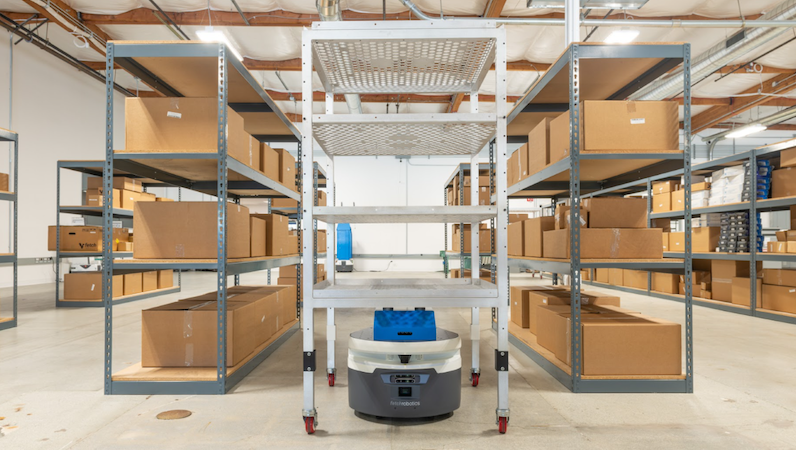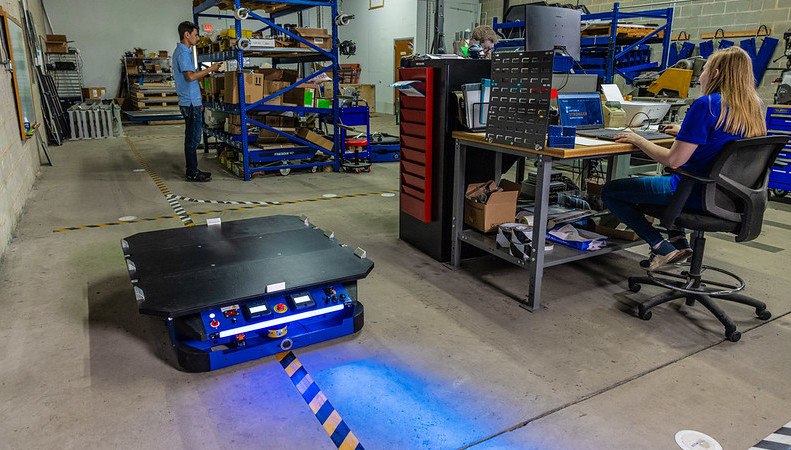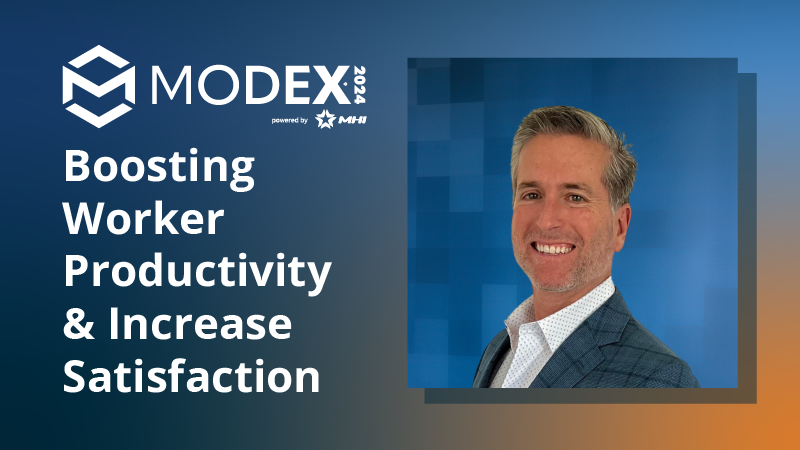Warehouse and distribution center operations managers seem to have endless options for warehouse process improvements. If only they had a bottomless budget to tap all the possibilities.
But we live in the real world, where capital purchases are closely vetted—because time-to-ROI matters.
So when leadership grapples with competing challenges on multiple fronts, it hurts everyone. Consider these common obstacles to warehouse efficiency and productivity:
- Space constraints can make it costly or impossible to add infrastructure like conveyors or other material handling equipment or infrastructure within a facility’s footprint
- A tight market for talent makes new hires more expensive—and encourages employee churn
- The vastness of modern warehouses and DCs means a lot (and we mean a LOT) of workers’ time goes to deadhead activities
- Lifting and carrying large or unwieldy objects can require two or more employees—and increases the risk of work-related injuries
- Too many tedious and menial tasks can quickly lead to worker dissatisfaction and problems with recruiting and retention
What’s a warehouse manager to do? Well, if they’re like an increasing number of leaders in supply chain and distribution, they explore automation and warehouse robotics. Specifically, they take a look at ways autonomous mobile robots, or AMRs, can improve efficiency and help save time.
Introducing robotics to a warehouse or DC doesn’t have to be daunting. Today’s AMRs are incredibly safe, surprisingly easy to implement, impressive in their capabilities, and quick to achieve ROI. In this post, we’ll show you the path from order pileups to AMR ROI.
What to Expect From an Expert Integrator
The first thing your tech consultant will do is answer your questions about AMR technology. After that, they’ll have a few questions of their own, such as:
- What’s the size of the facility?
- What types, sizes, and weights of objects are moved?
- What do working conditions look like, in terms of cleanliness, tidiness, clearances, etc.?
- Will the AMR work in a collaborative environment with people?
- What other types of equipment are operating in the space?
It’s important to select an AMR with the correct specifications to handle the tasks in terms of weight, dimensions, and the means by which the robot interacts with the object. For example, one AMR may move a cart by rolling under it and engaging it with a jack; another might sport a built-in tote, into which workers place items to be moved.
Evaluate Environments and Target Tedious Jobs
According to the Mayo Clinic, the average American walks about 3,000 to 4,000 steps a day. A warehouse picker, on the other hand, may walk 20,000 steps or more in just one shift. Menial tasks and deadhead activities aren’t just a waste of workers’ time and labor; they also get in the way of warehouse employees’ sense of productivity and purpose on the job.
AMRs, on the other hand, were literally made to move objects and materials. We wouldn’t say they love traversing long distances inside warehouses—but maybe if they felt emotions they would, because when an AMR takes over the least productive aspects of a warehouse picker’s job, that worker’s day can become a lot more productive and satisfying.
The best places to start with AMRs are often these and similar tasks:
- Dunnage – moving cardboard, packaging, and other waste to receptacles or compactors
- Milk Run – transporting any item or object from one location to another
- Vertical Lift Module to Packout – receiving items from storage in a VLM and delivering where they’re needed, enabling more use of a warehouse’s vertical space
An AMR needs a clean, debris-free, indoor working environment, too. Packing dunnage and other detritus can’t be scattered across floors. And, because of the light-sensing technology AMRs use to navigate, they need some exposed fixed objects—and no mirrors that could interfere with navigation. Extreme temperature differences can cause condensation that can also impede operation.
An expert integrator can help you evaluate the working environment for suitability, including aisle widths, clearances, floor condition, and other key details.
Compare Labor Costs and Outcomes
When investigating an AMR purchase and expectations for ROI, it’s important to keep in mind not just hourly wages but the fully burdened wage rate of an average worker. Unlike human workers, AMRs don’t require vacation time, health benefits, worker’s compensation insurance, or a lot of the other expenses that add to the fully burdened wage rate of warehouse employees.
Also unlike human workers, an AMR can work a full shift without a break. When its battery level gets low, it docks itself to a charger, and soon it’s ready for another 8–10 hour shift. Weekends? Sure. So it’s easy to see how you can accelerate your AMR’s path to ROI, and how that benefit can be sustained over years.
Consider, too, a multi-year AMR lifecycle against the recurring costs of employee churn, a common challenge for warehouse operators. New pickers aren’t just hard to hire, they’re increasingly hard to keep. And given the nature of the work, maybe it’s not a surprise that warehouse workers surveyed said they’re more likely to quit their current job to go to an employer who implements helpful technologies like AMRs.
Prepare Teams for Changes Ahead
AMRs are manufactured to meet ANSI/RIA R15.08. That means workplace safety is the number one priority. Simply put, AMRs are designed to be able to work in environments alongside humans. That’s one important message warehouse workers need to hear.
But, they may also benefit from reassurance that they’re not being replaced by machines. On the contrary, warehouse operators implement AMRs to help their human workers have a better daily experience on the job, and to be more productive with the time and effort they put in.
That said, some users find it helpful to place new AMRs in a lounge or break area in advance of implementation, to allow workers to get familiar with them. You might even hold a contest to name yours. But it’s smart to show workers how AMRs move, how they “see,” and how they can stop and navigate safely around obstacles like people and pallets.
Install, Set Up, and Go
One of the most exciting aspects of AMR installation is how simple and hands-off the experience is for users. Without needing additional IT support beyond opening firewall ports to allow it to communicate with the cloud, AMR customers simply connect the system to their WiFi network and let the software take the lead.
From there, the AMR crawls the entirety of the facility and generates a user map using a combination of LiDAR and sensors; a million-square-foot facility can be mapped in a single day. The AMR uses fixed objects as its navigational reference points within the map. The user then designates up to 1,000 unique locations and creates the AMR’s task or tasks.
Add Use Cases for Even Faster ROI and Scaling
It’s common to start with a single use case—after all, it’s not hard to occupy an entire day moving dunnage in a warehouse—and typically, a new AMR is occupied with tasks about 80% of the time. But most users quickly discover more opportunities to put their newly acquired AMR to work. And if the work queue warrants another AMR, it’s even easier to add a second than it was to install the system.
AMRs are an exciting, high-impact opportunity for warehouses, DCs, and fulfillment centers to effectively address labor shortages and productivity challenges quickly and safely. They’re one of many supply chain tools and solutions that can work together to support more efficient, accurate, profitable operations. RAIN RFID (radio frequency identification) is another technology that’s increasingly in demand, used to monitor, track, and trace products and reusable transport items as they move through the supply chain. Click here or below to download your free guide today.







